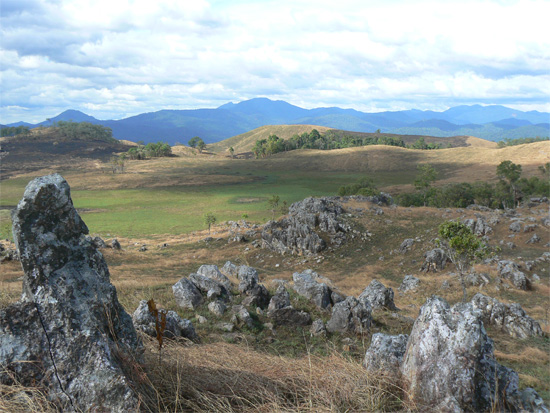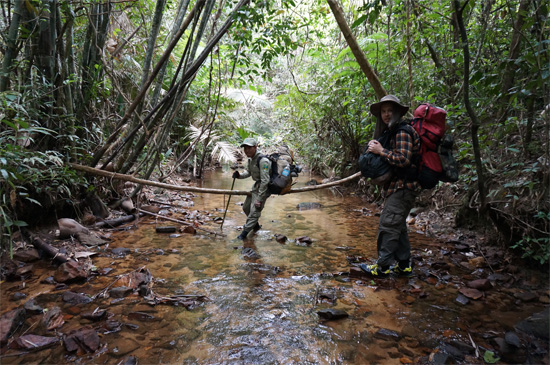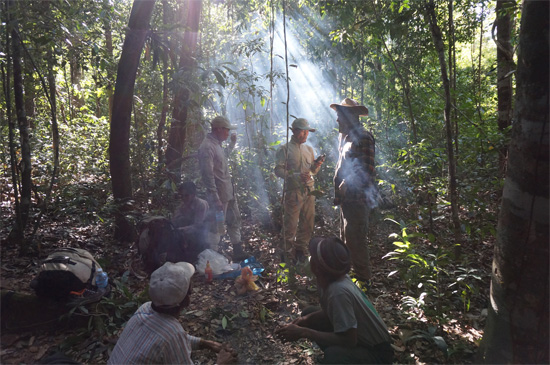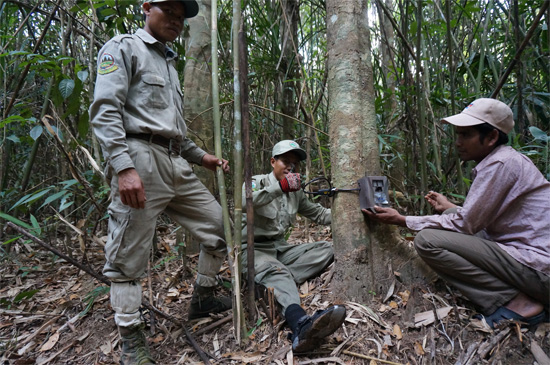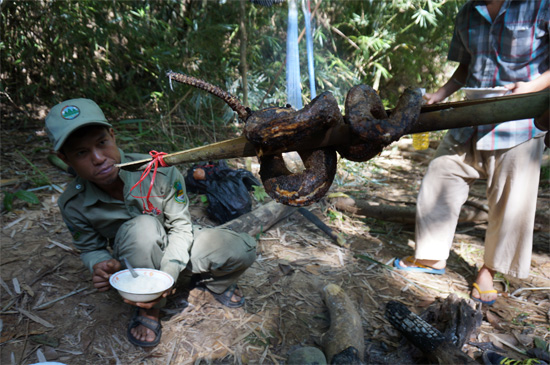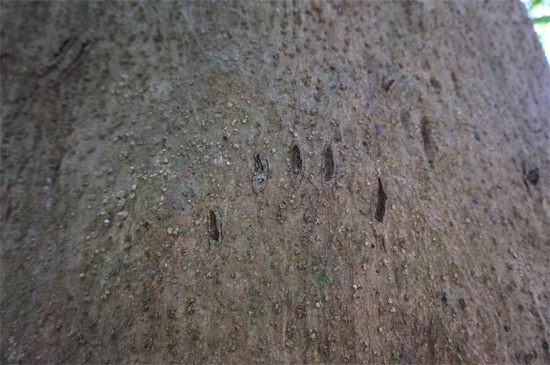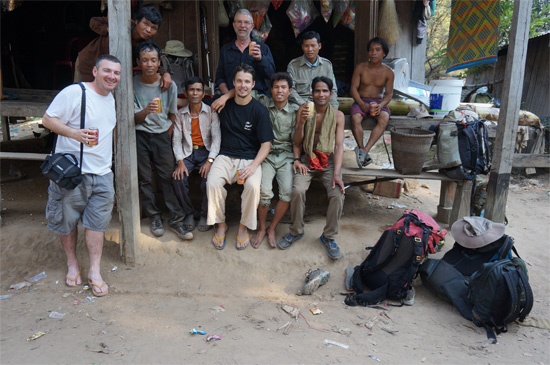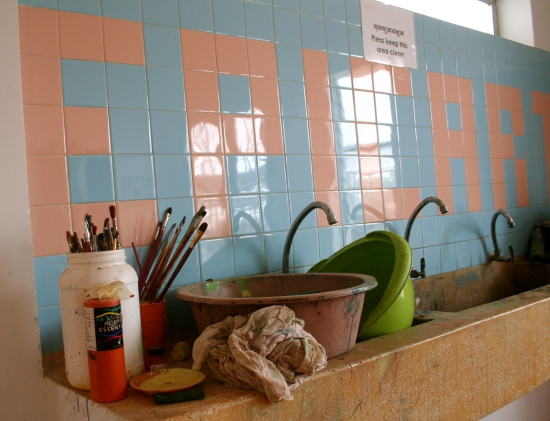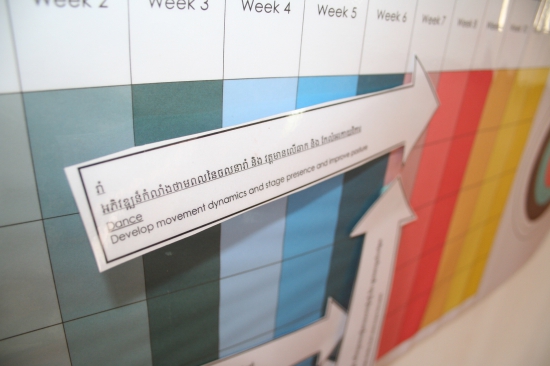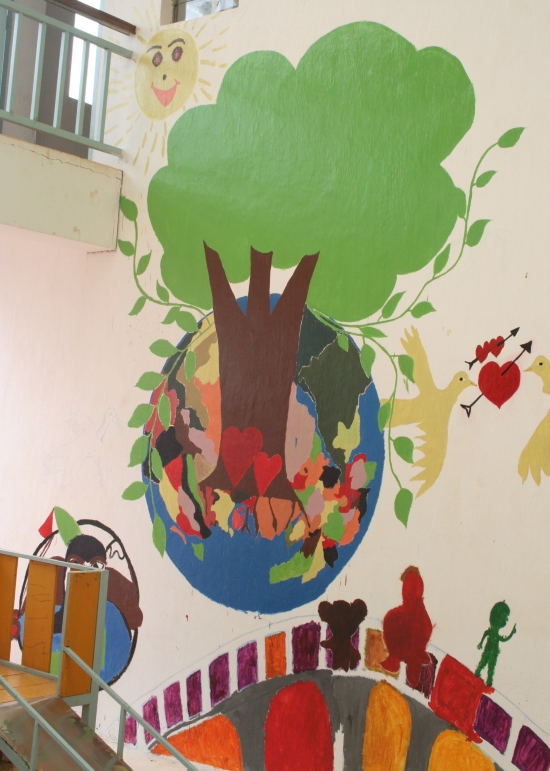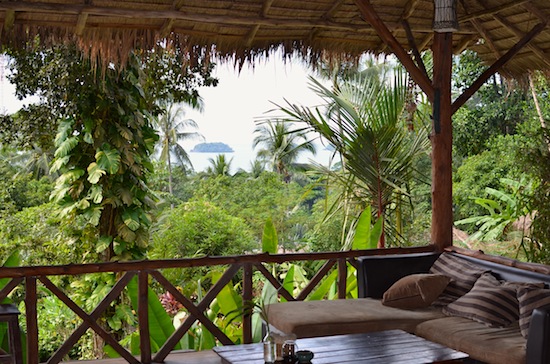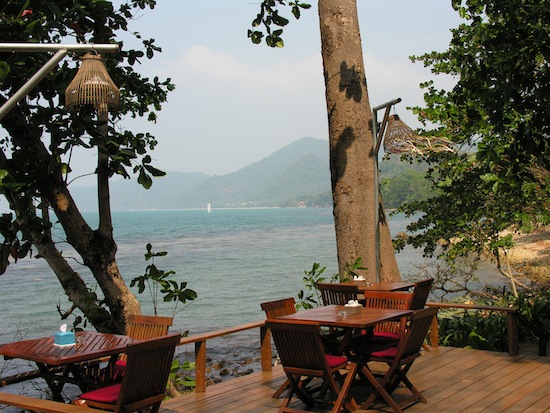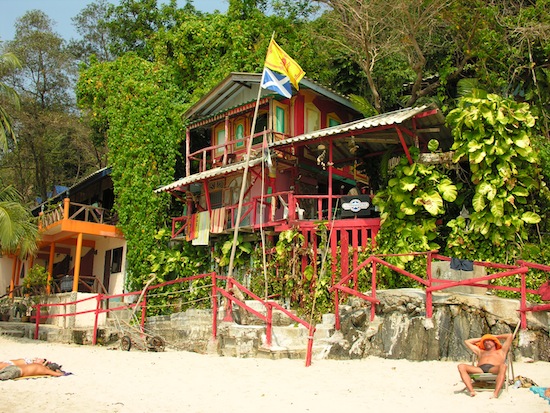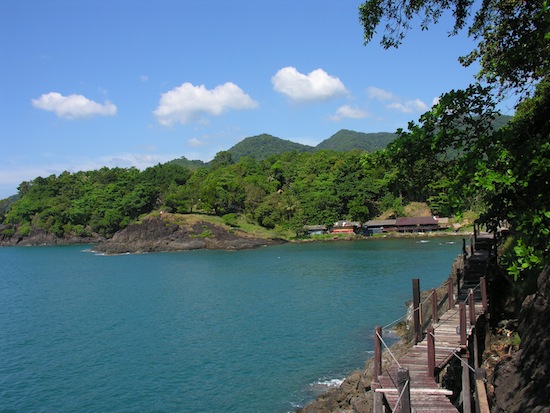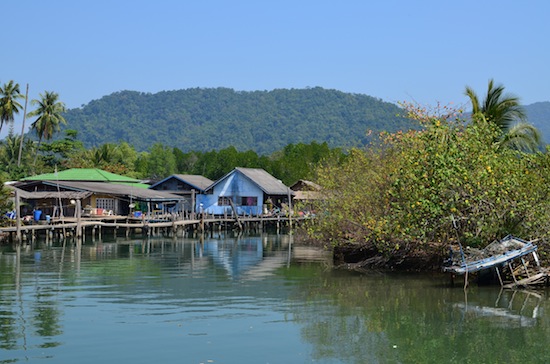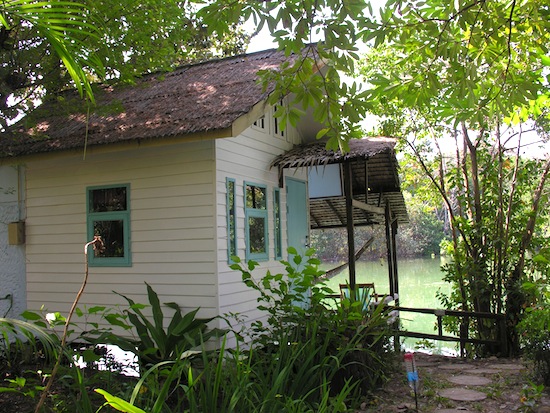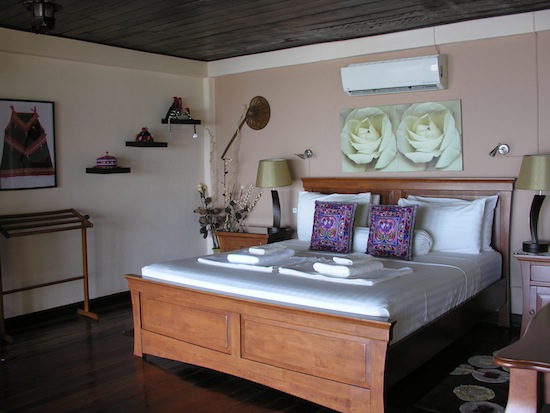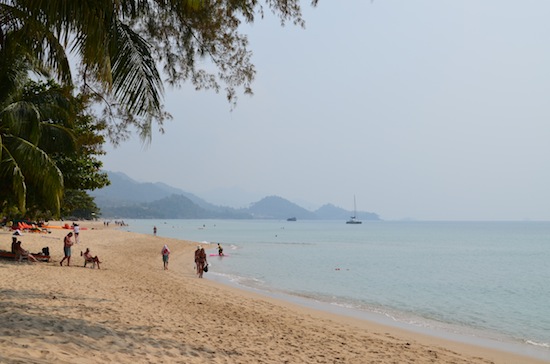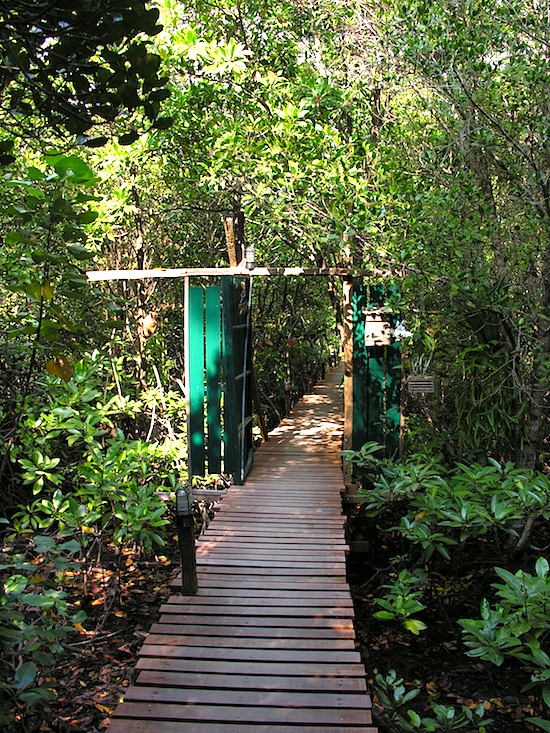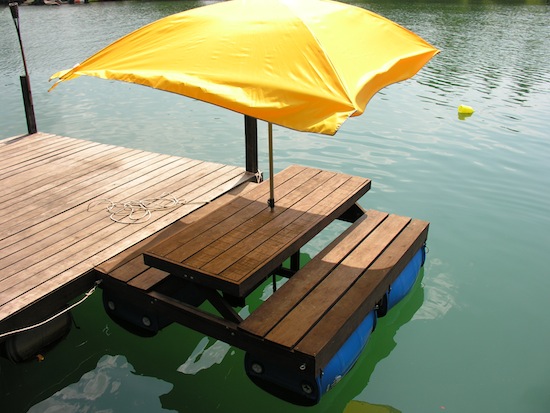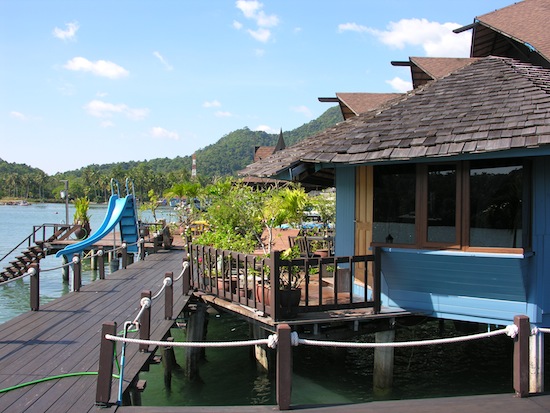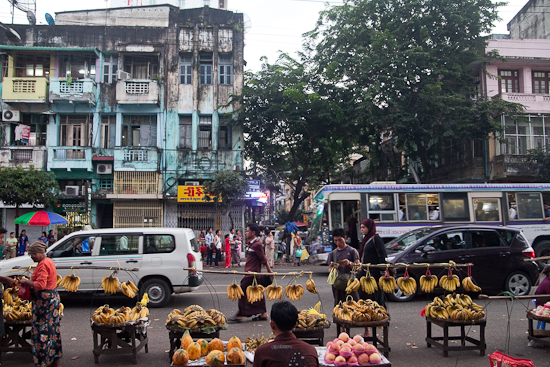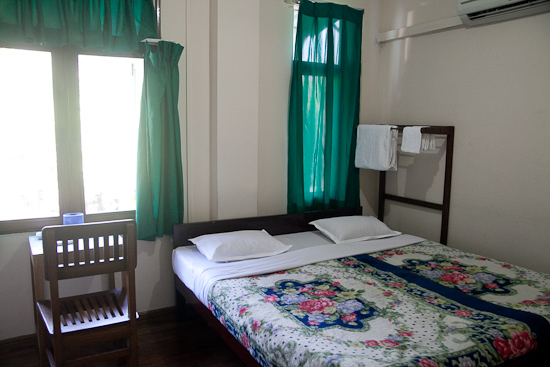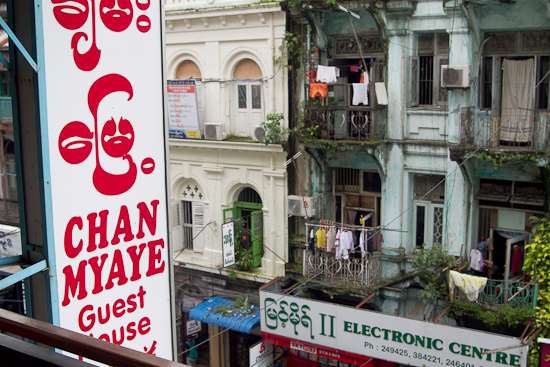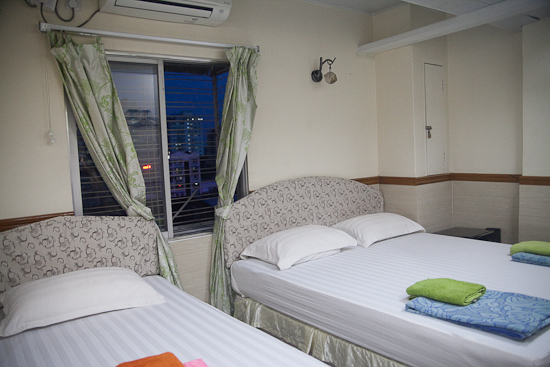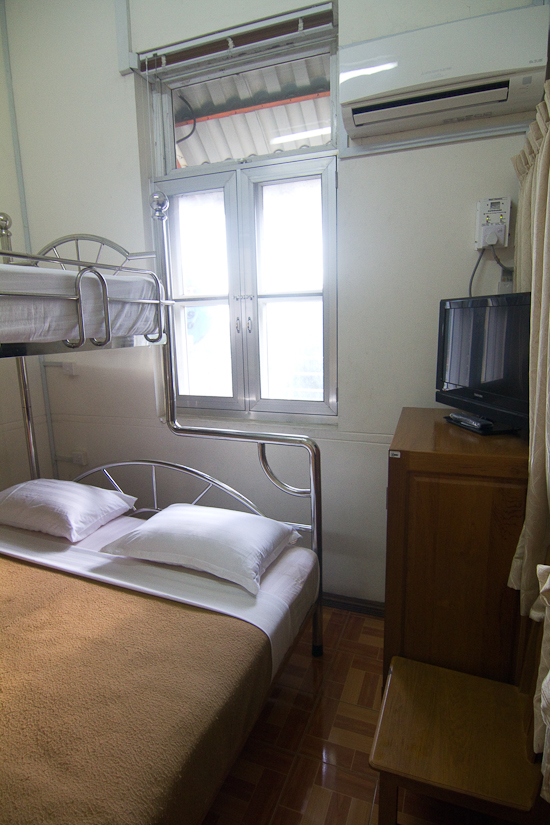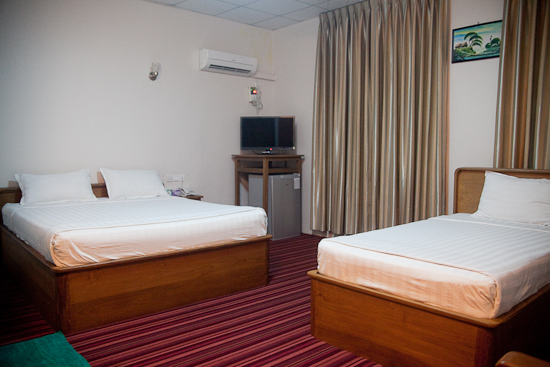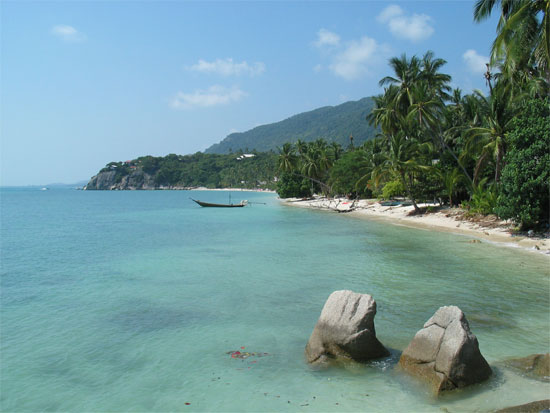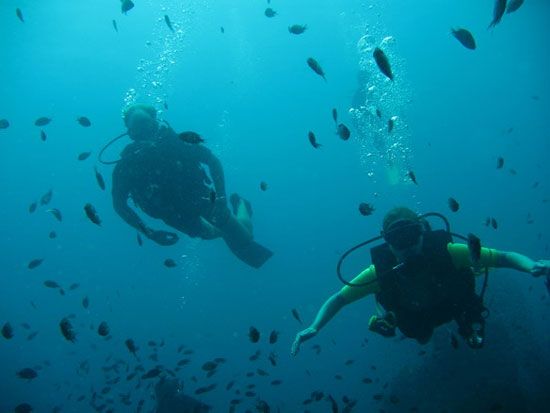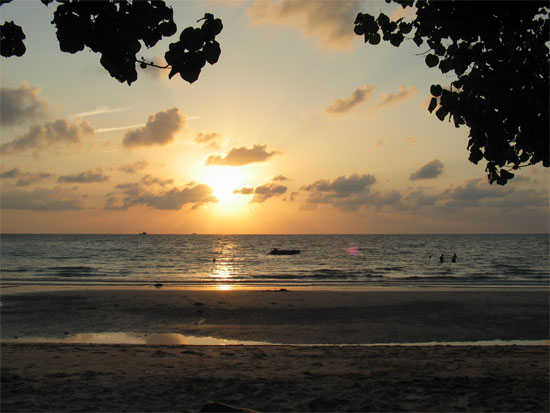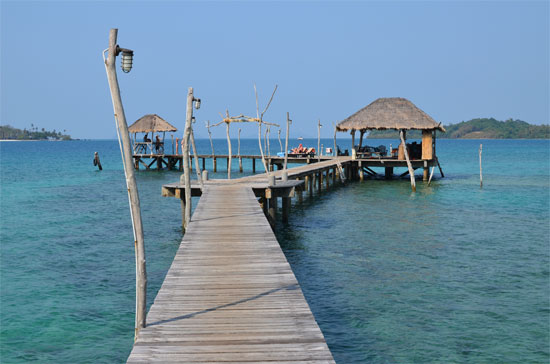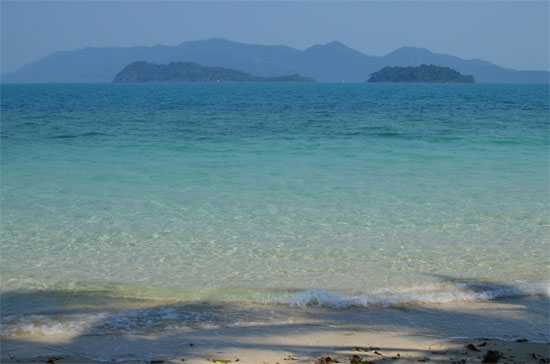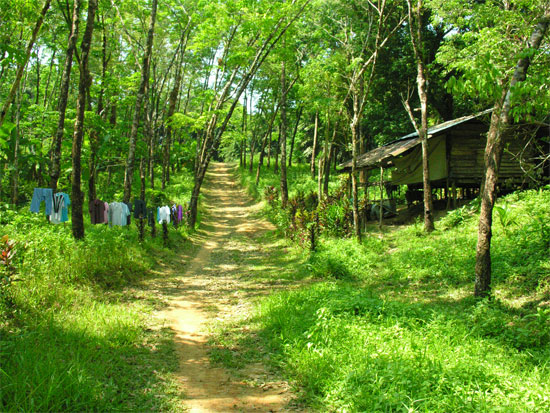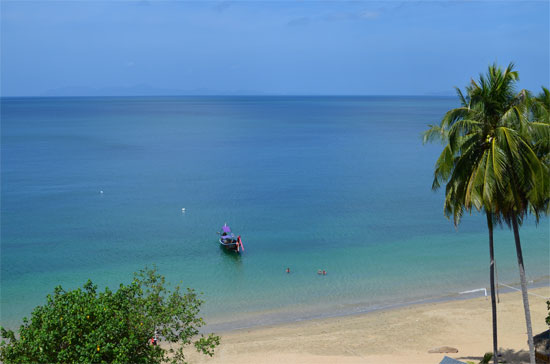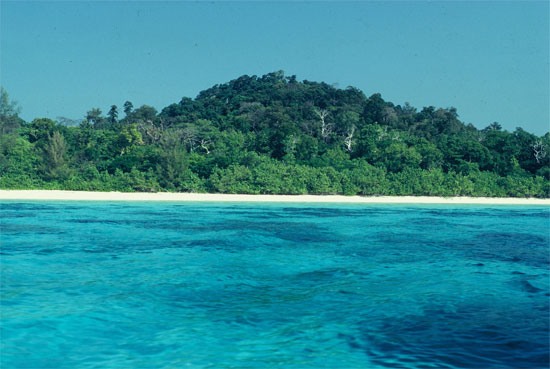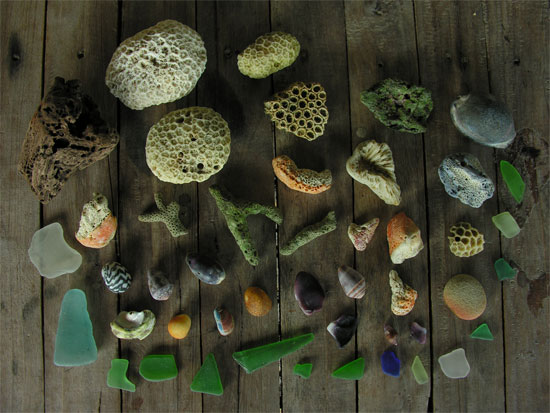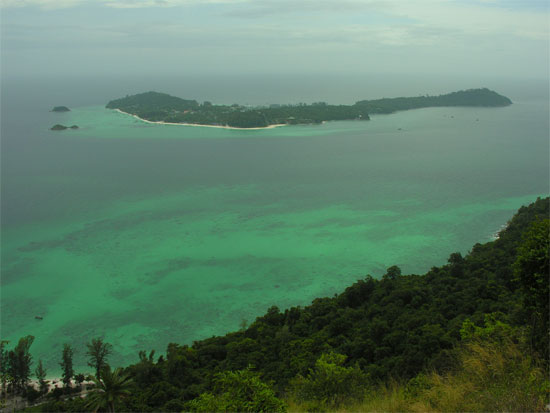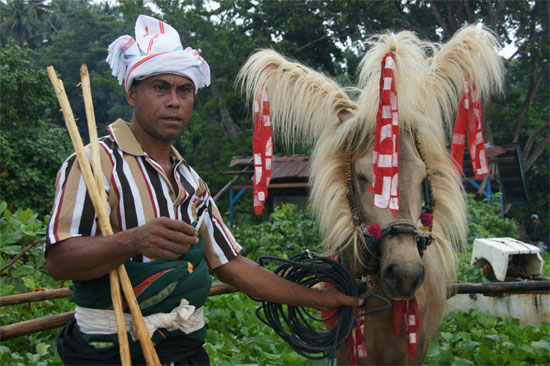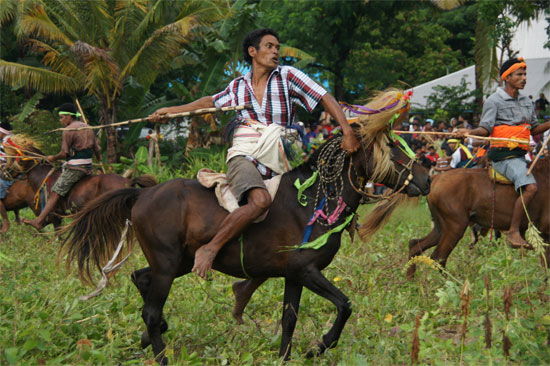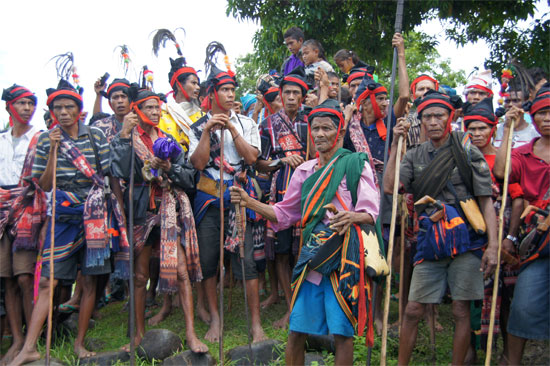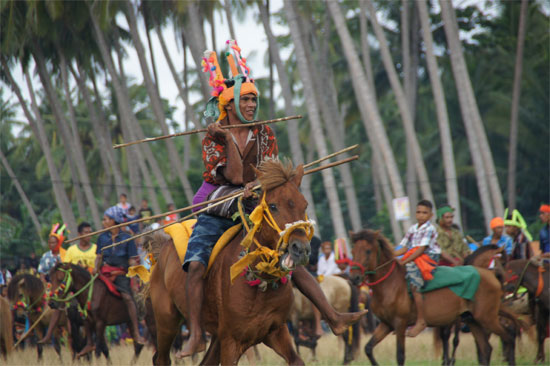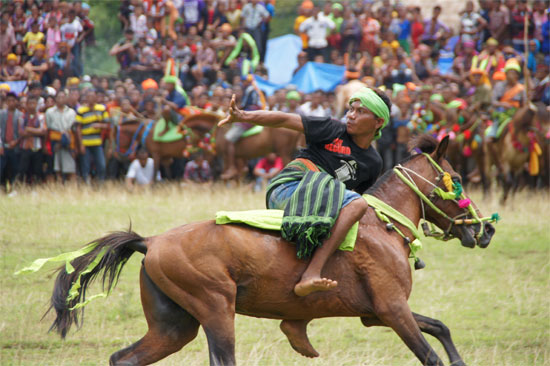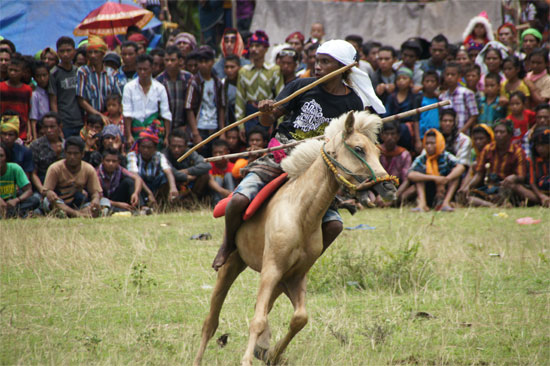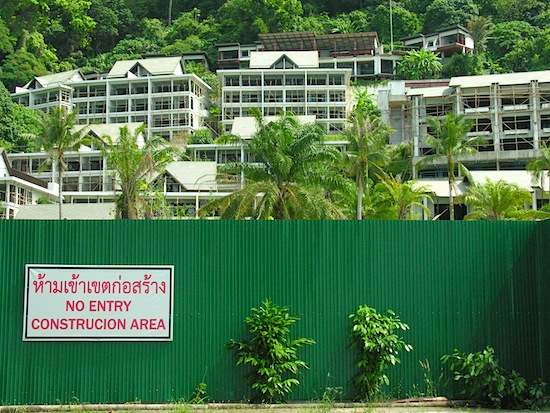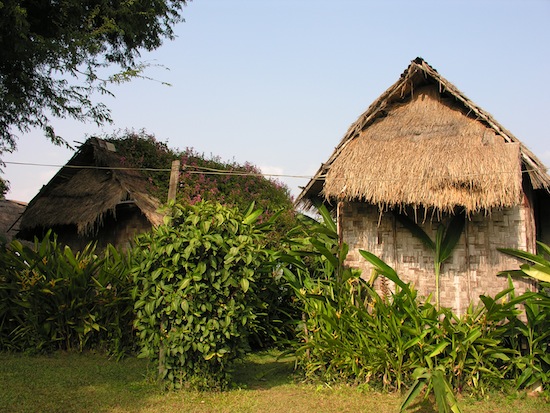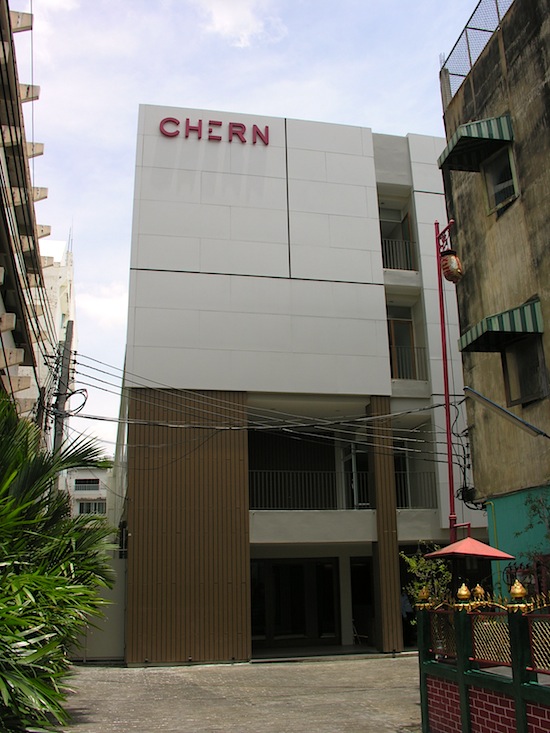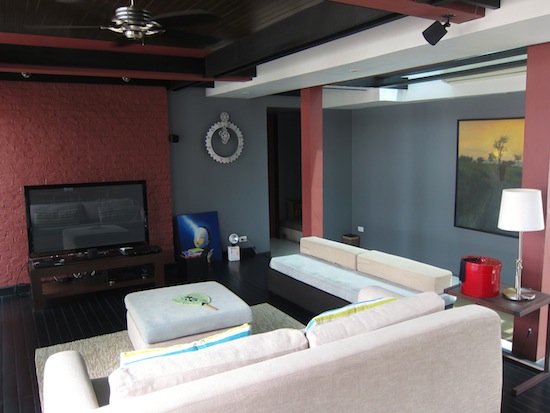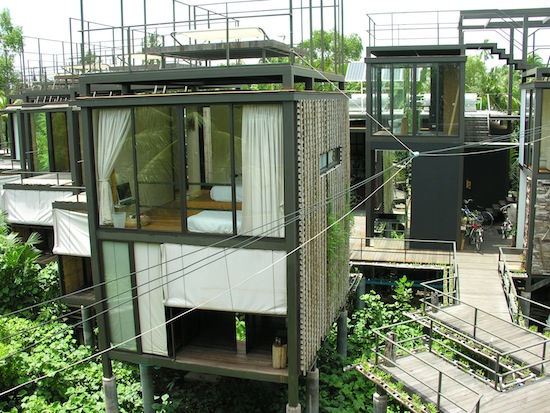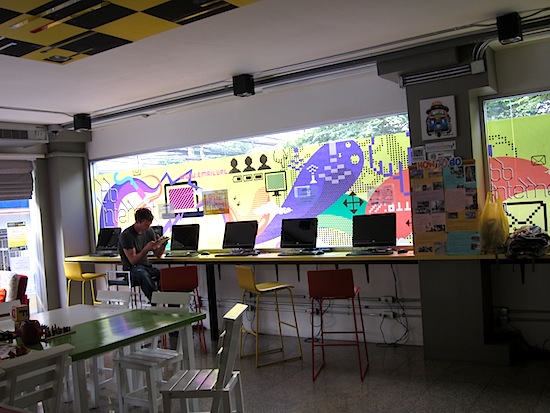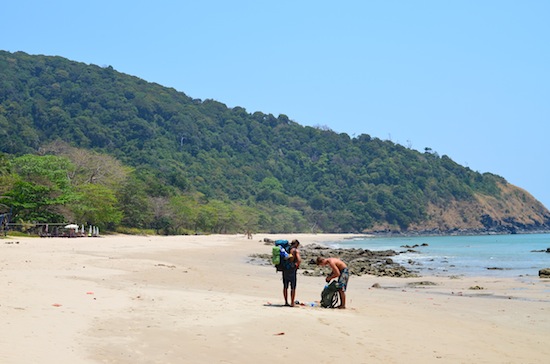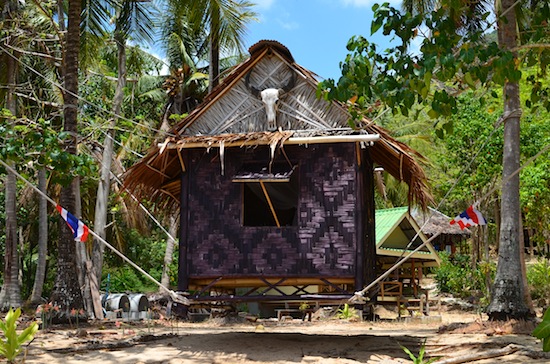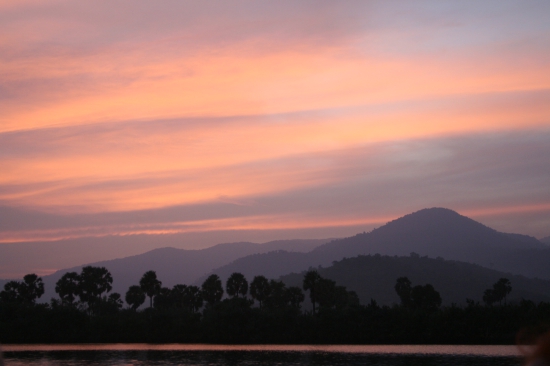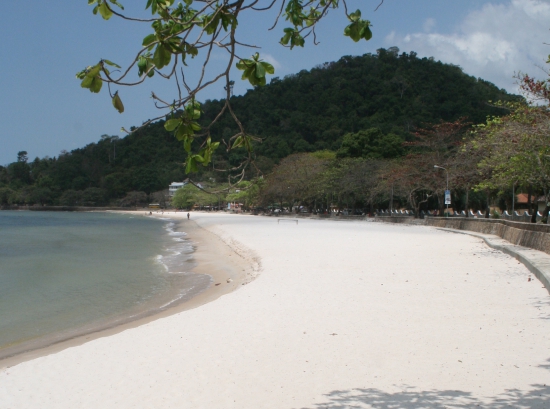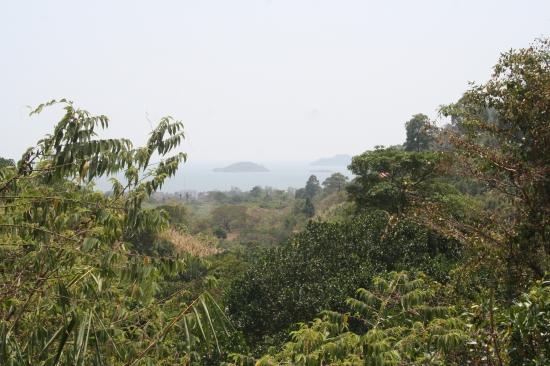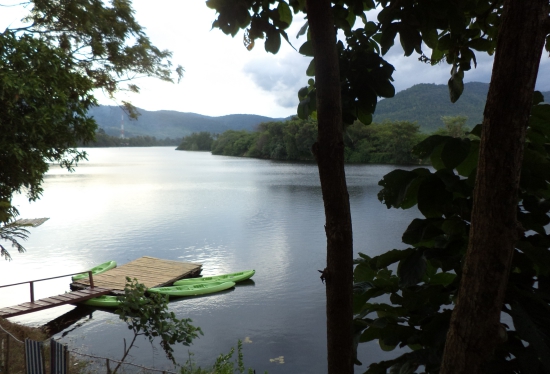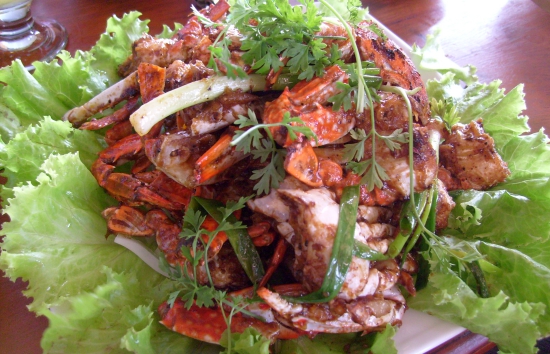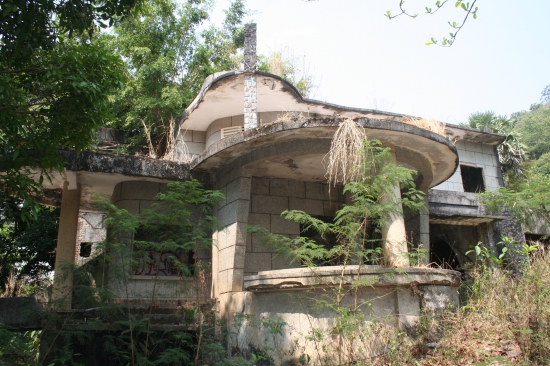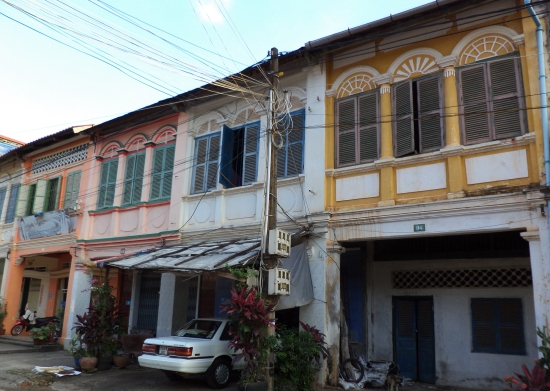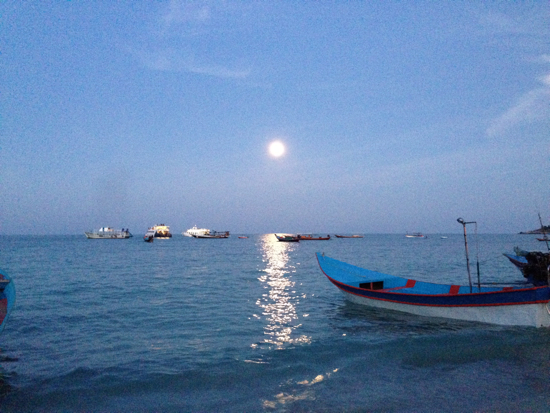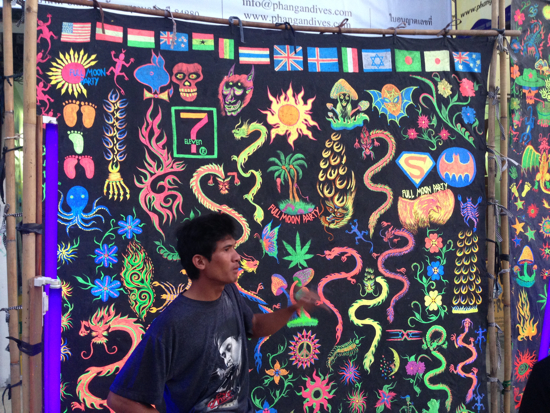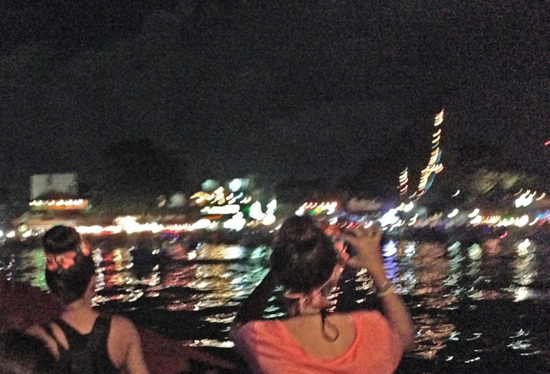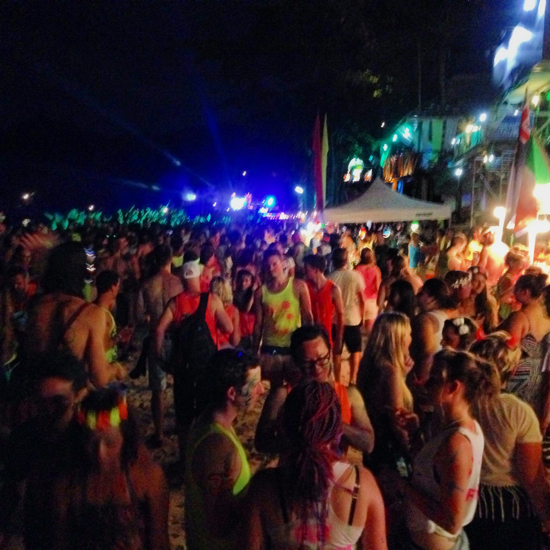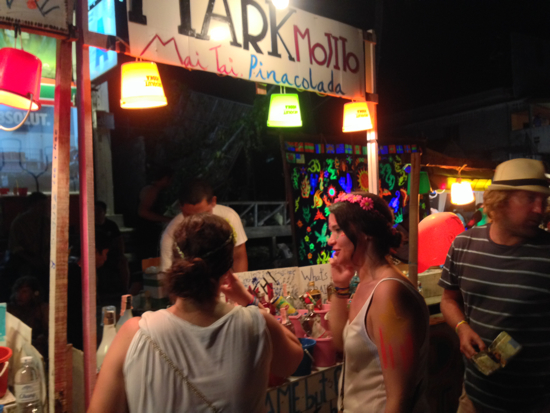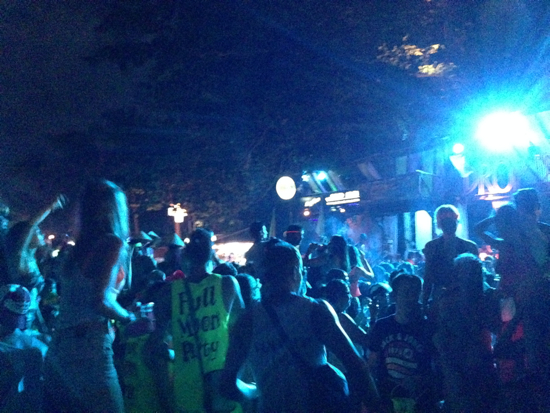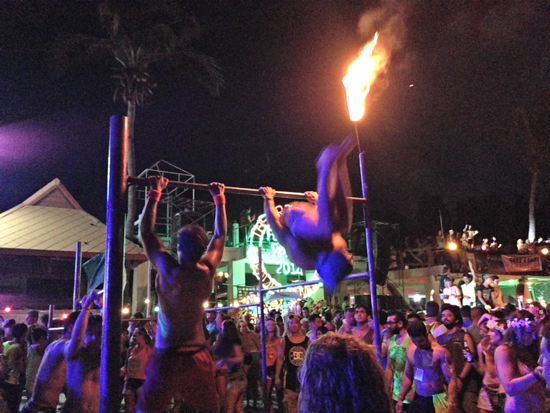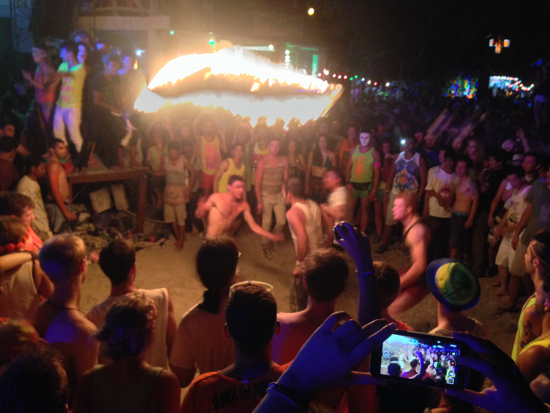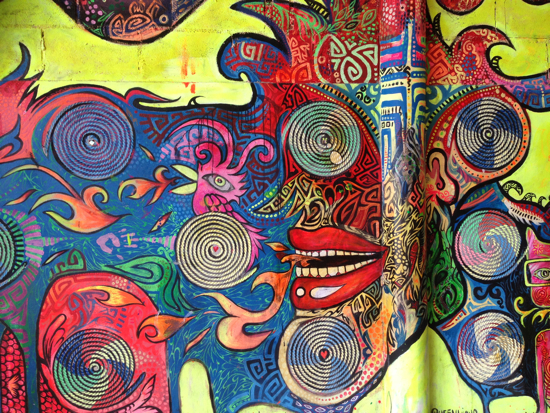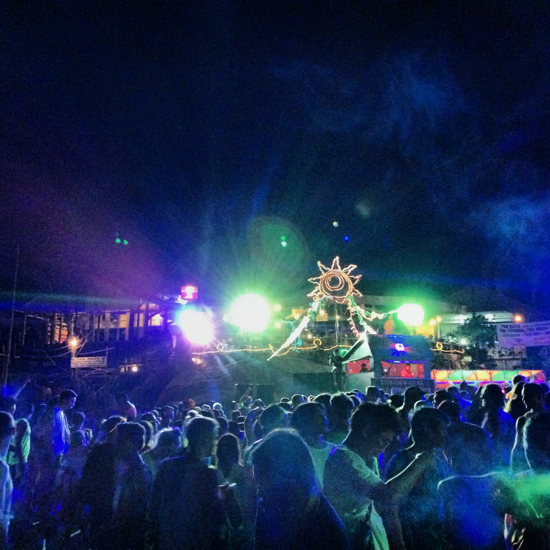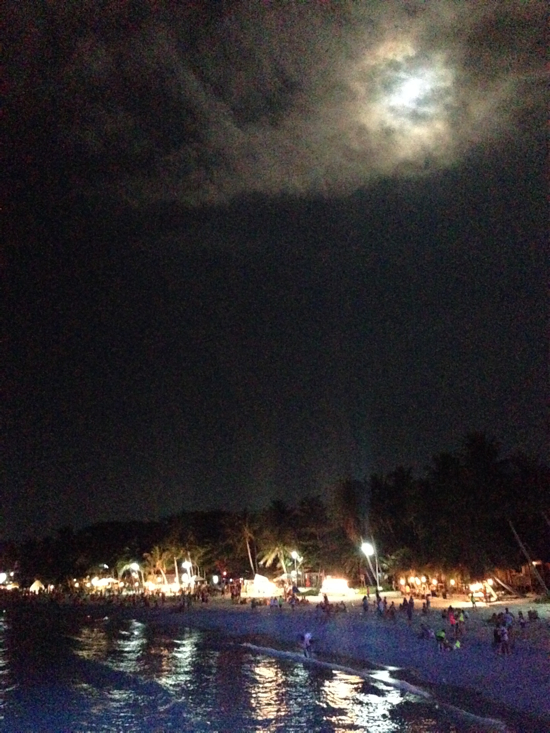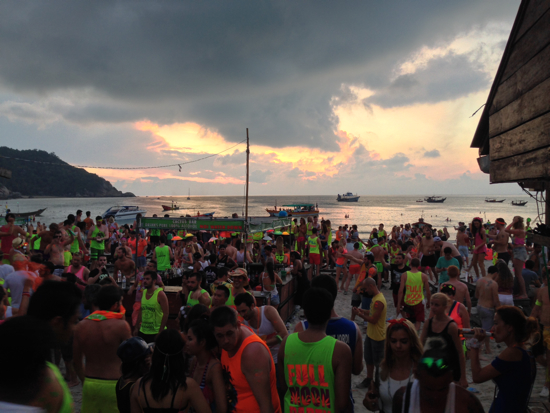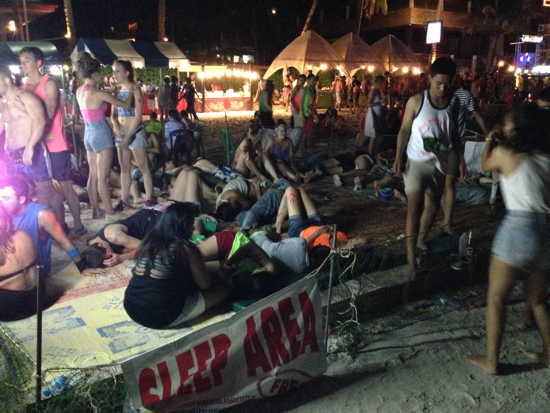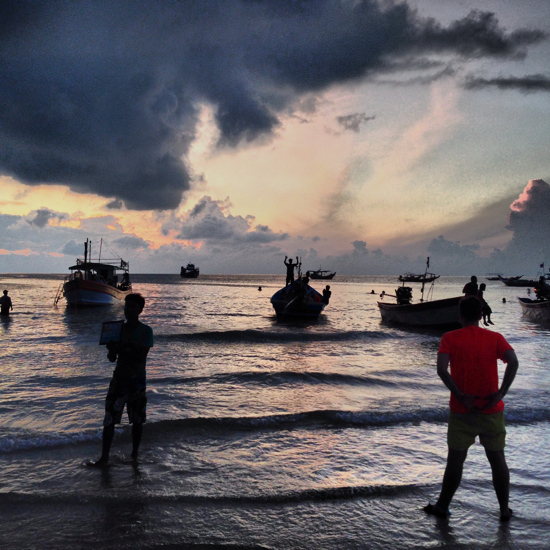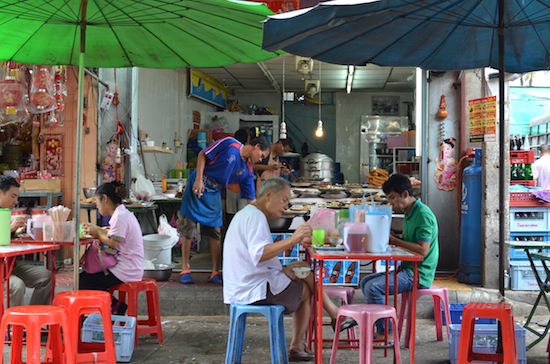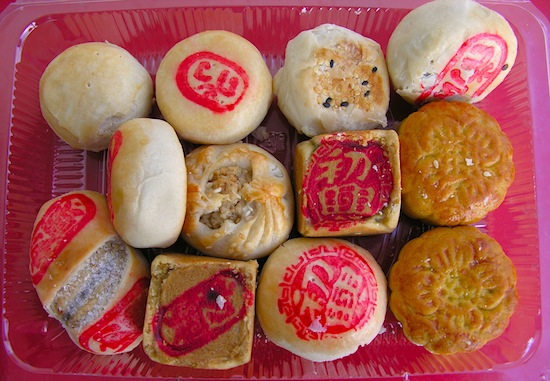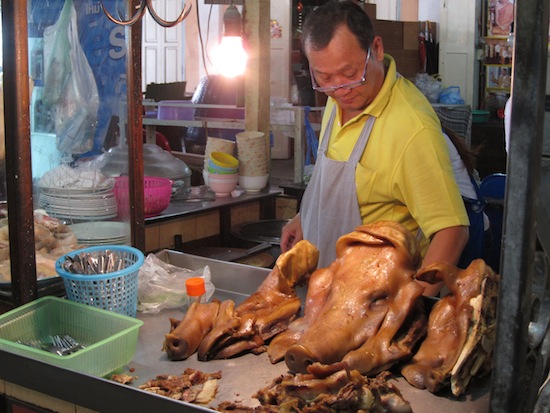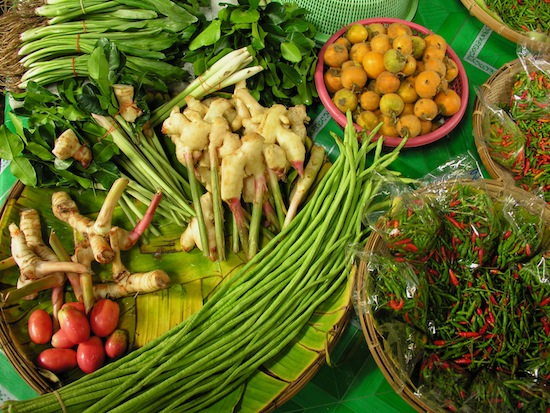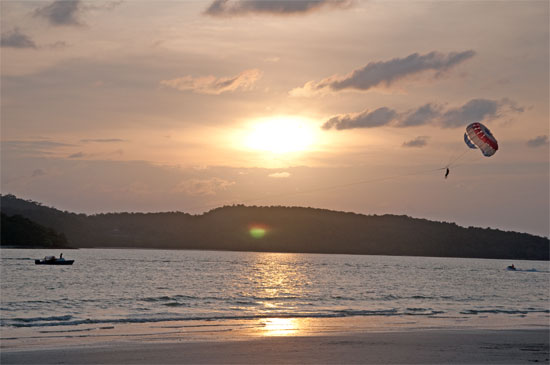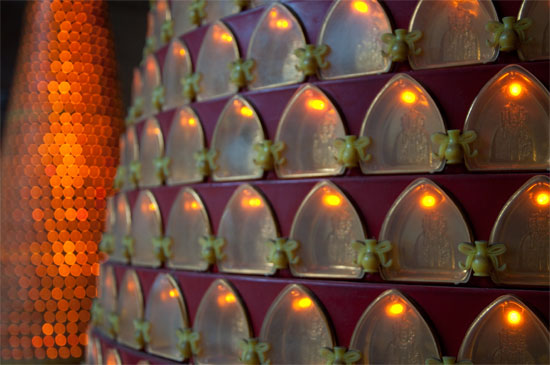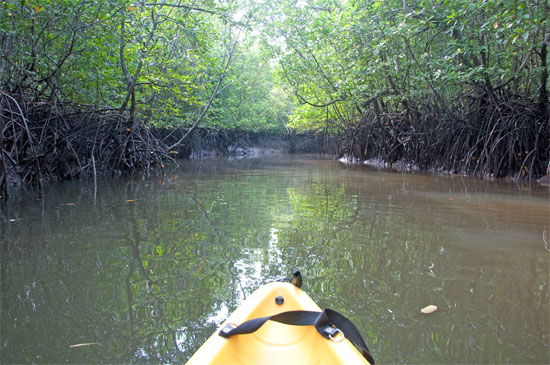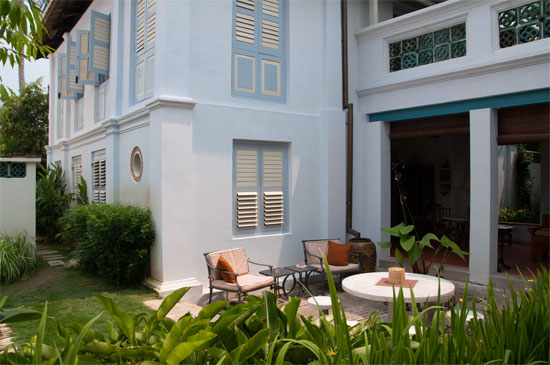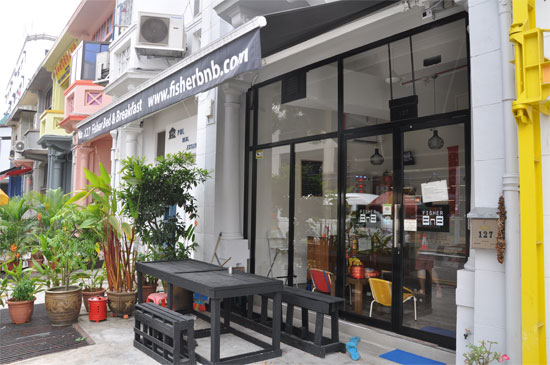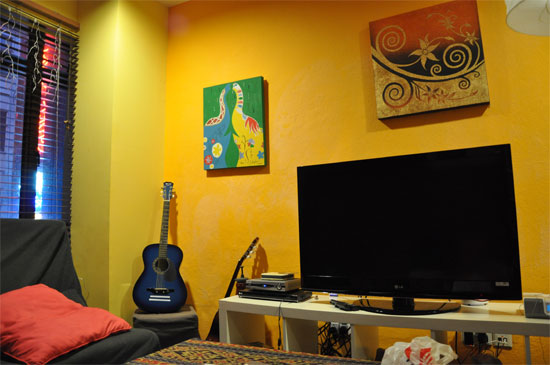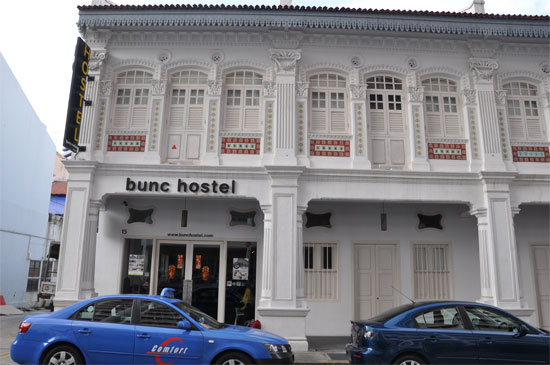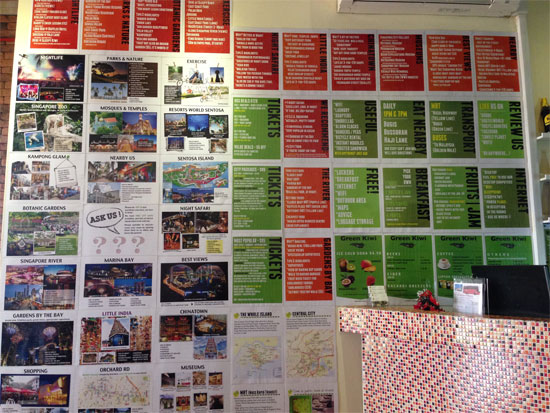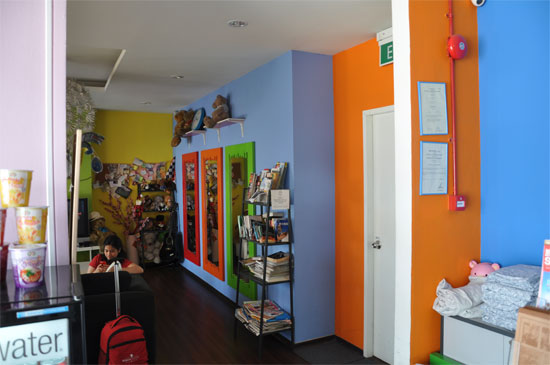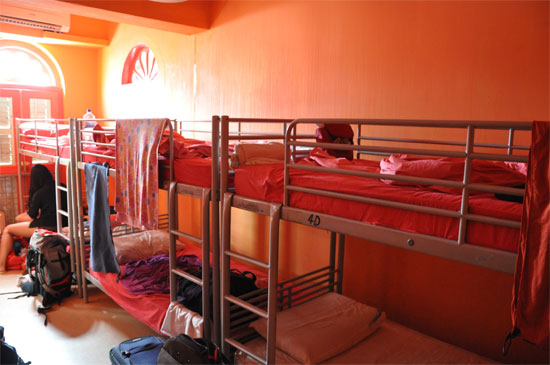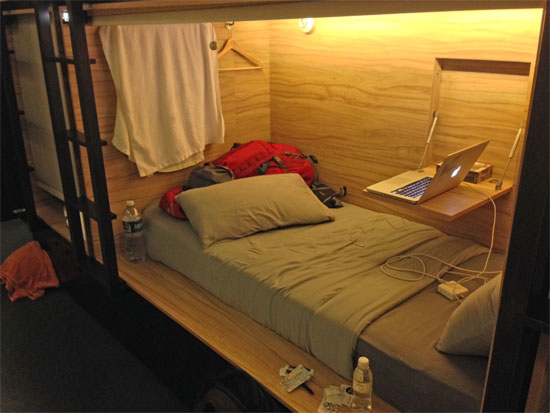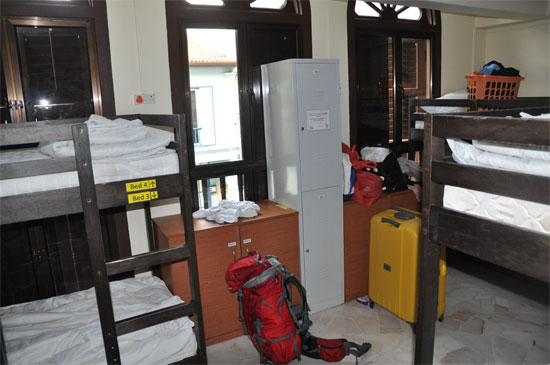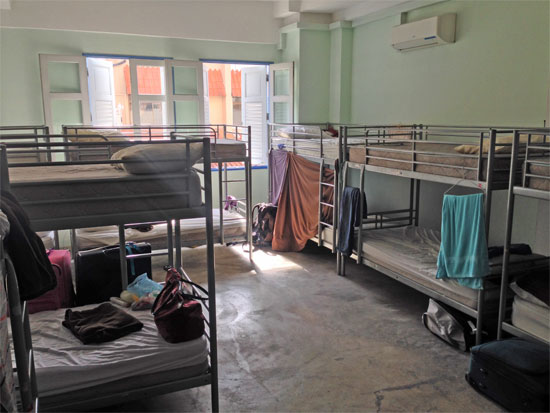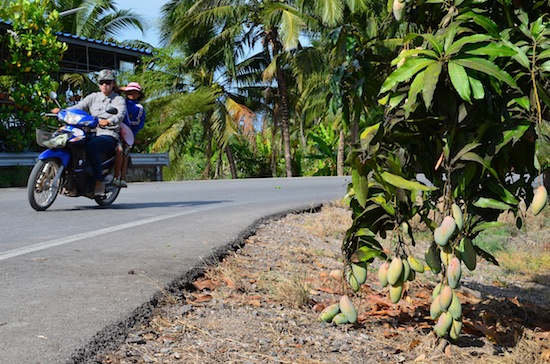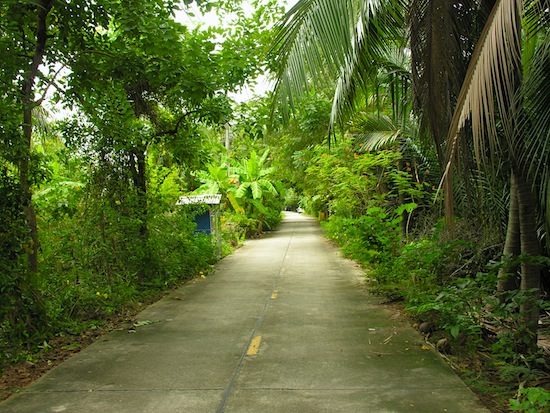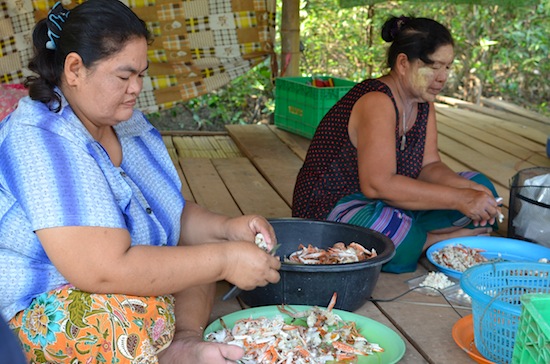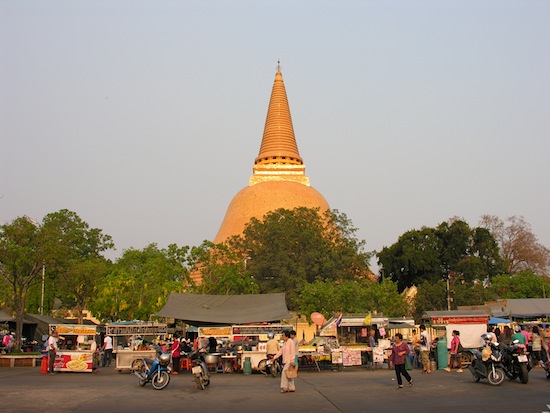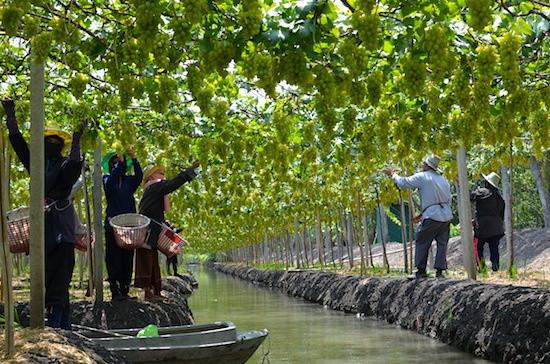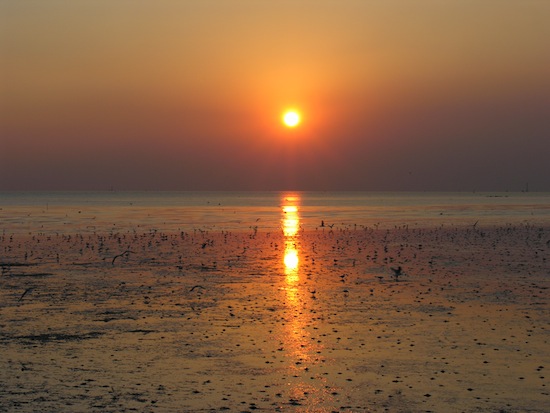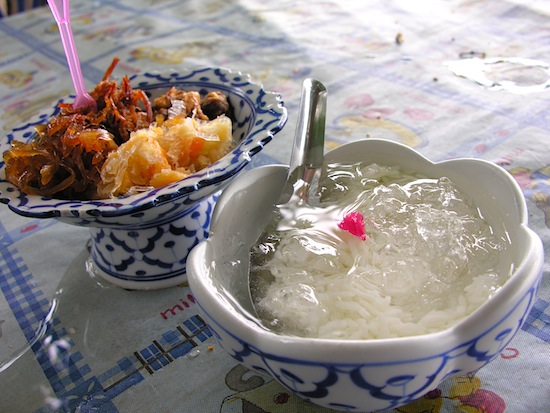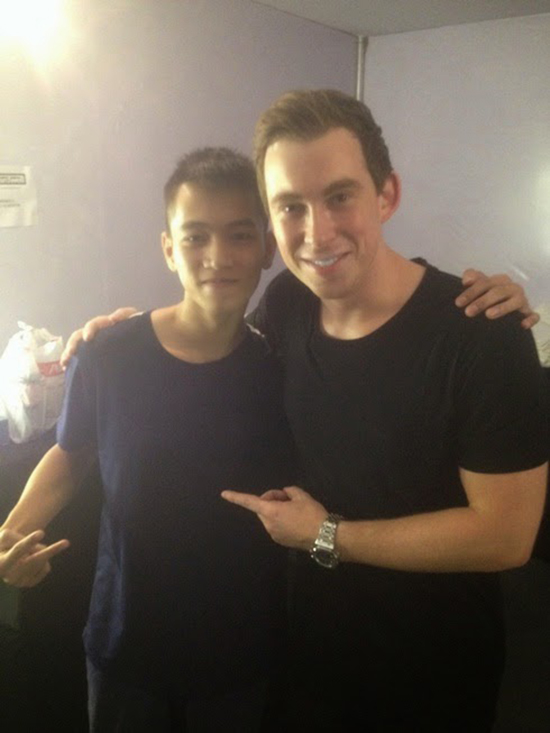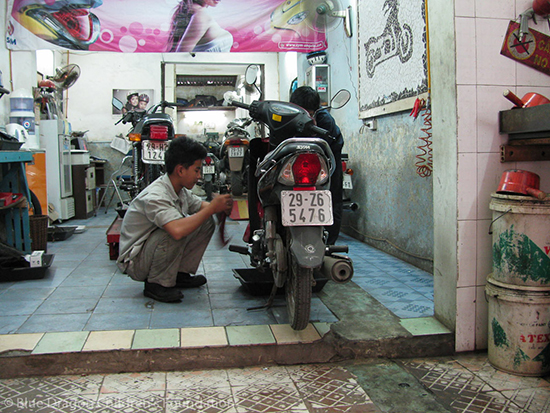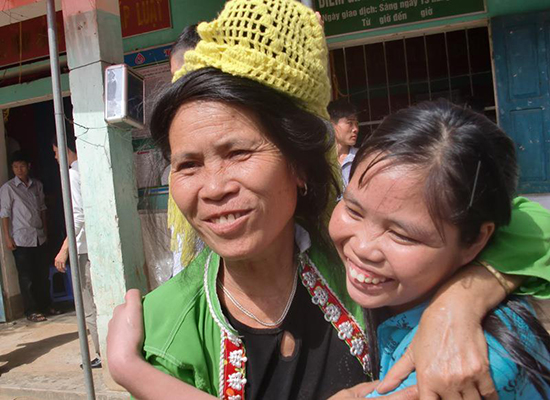Recently I sat down with Travis Sherry of Extra Pack of Peanuts for an interview about Travelfish.org, travel in Southeast Asia and so on. I mentioned that during my frequent travels over the years to Thailand, I've visited 31 islands in total. So while Thailand has very famous islands like Ko Samui and Phuket -- perhaps your average traveller would be pushing it to name more than five -- it also has a lot of others worth considering. Without further ado, here's my list of 31 islands with a few lines about each. Happy island hopping!
Gulf of Thailand
October and November see the most rain on Samui, Ko Pha Ngan and Ko Tao; the best time to go is June through August and around Christmas. The wet season is fairly mild.
1) Ko Samui
A large island with equally large resorts. A wide variety of beaches, from the over-developed and sleazy to low-key and local. Budget options remain, but backpackers are better served with more options on neighbouring islands.
![Hello Leela, it has been too long.]() Hello Leela, it has been too long.
Hello Leela, it has been too long.2) Ko Pha Ngan
Home to the infamous Full Moon Party, which for better or worse is a rite of passage for many young travellers, Ko Pha Ngan is also home to more than a dozen beaches and bays, some stunningly beautiful, and an interior clad in coconut groves and jungle. Interests served range from smoking weed in a hammock (this is illegal by the way!) to getting high naturally. This island is a hit with sun hedonists and a great spot for single travellers to meet others.
3) Ko Tao
One of Thailand's most popular diving locations, with thousands of travellers learning to dive here year in, year out. By Thai standards the diving is reasonable. Above the water, beaches range from bar and guesthouse-lined through to isolated getaways. Prices are moderate. Good for hiking and bouldering.
![Get wet.]() Get wet.
Get wet.4) Ko Nang Yuan
A blip of an island just off the coast of Ko Tao and home to a single semi-upmarket resort. Known for its snorkelling -- and gets overcrowded with day trippers.
5) Ang Thong National Marine Park
While the park encompasses a bunch of islands, we'll count it as one. Commonly visited on a day trip from Ko Samui, you're able to visit a spectacular lake (the one Leonardo jumped into in The Beach), go kayaking and just explore. Overnight camping trips are possible and come very highly recommended.
6) Ko Thalu
Off the mainland, between Bang Saphan Yai and Noi, Ko Thalu hosts a single private resort that also claims ownership of the entire island. Most visit on a day trip as the resort is overpriced for the standard. Acceptable snorkelling when the conditions allow.
![Assistant required. Must be able to paddle.]() Assistant required. Must be able to paddle.
Assistant required. Must be able to paddle.Eastern Thailand
This area, especially around Ko Chang, gets very heavy rain in July, August and September, so bear that in mind. Ko Samet is pretty good year-round.
7) Ko Si Chang
Just a hop, skip and a jump from Bangkok, Ko Si Chang faces onto Bangkok's deep water anchorage and delivers great ocean vistas, but not the cleanest waters in the kingdom. This is a very local spot with foreign travellers few and far between. It's a good choice if you're waiting for a visa and can't face Samet again.
8) Ko Samet
Ostensibly a national park, but a shambles in that regard, Ko Samet offers convenient weekend getaway material for Bangkokians and others passing through. Quite built up, it's generally not the best value and pollution remains a problem. Some of the beaches though are very photogenic.
![Beats Bangkok.]() Beats Bangkok.
Beats Bangkok.9) Ko Mun Nork
Just to the east of Ko Samet, Ko Mun Nork was home to an affordable resort that did packages out of Bangkok. It has recently redeveloped and moved considerably more upmarket, but if your budget stretches, this is a great place to get away from it all with a few books and a bottle of wine or three.
10) Ko Chang
Thailand's Elephant Island rivals Ko Pha Ngan for its budget offerings, but also has a mind boggling selection of more upmarket hotels and resorts. The busier beaches are well worth skipping entirely while the quieter spots still offer considerable beauty. The interior is still vast tracks of jungle.
11) Ko Maak
Broad and largely flat, Ko Maak is almost as famous for its sand flies as it is for its low-key vibe. Popular with slow travelling backpackers, you'll find plenty of discounts for long stays here.
![Ko Maak taxi rank.]() Ko Maak taxi rank.
Ko Maak taxi rank.12) Ko Kham
A tiny island just off the coast of Ko Maak, this was once a popular place to hangout when Ko Maak just got too busy for you, but it's now in the midst of a very slow moving villa development, which should keep it out of most budgets.
13) Ko Wai
If you thought Ko Maak was too busy, Ko Wai could be to your liking. While it gets busy with day trippers during the day, in the morning and late afternoon this island has a blissful serenity you'll not find in many islands in Thailand.
![Islands and more islands.]() Islands and more islands.
Islands and more islands.14) Ko Kut
My favourite island in Thailand. A little pricey for backpackers, but the beach quality more than compensates. Some of the best beaches in Thailand can be found here -- it's truly Maldivian. One downside is the snorkelling and diving isn't very good.
Andaman Coast
The wet season on the Andaman Coast runs from around May to October. On smaller, less popular islands, some resorts may shut up shop while the popular islands run year round.
15) Ko Chang Noi
Often referred to as "Little Ko Chang", from a vibe point of view this is more like "Little Ko Pha Ngan". Think much time spent in hammock doing very, very little. Particularly popular with German travellers who've been coming here forever.
![Take a walk on the wild side.]() Take a walk on the wild side.
Take a walk on the wild side.16) Ko Phra Thong
In a solid case of wilderness meets an island, Ko Phra Thong delivers the goods for people how want to really get away from it all. Beautiful wooden houses are available to rent for those with the funds and backpackers are also catered to. Great for families who'll enjoy a place where the closest 7-eleven is a two-hour boat ride away.
17) Phuket
Some love it, some hate it. Swings between breathtakingly sleazy to breathtakingly beautiful in a matter of a five-minute motorbike ride. While the best known beaches are heavily touristed with massive resorts, the far north of the island is largely deserted, save the occasional seafood shack where you can order barbecue squid and cold beer at very reasonable prices. Phuket Town though boasts a charming historic vibe and fabulous food. Many who write off Phuket have never been there.
18) Ko Phi Phi Don
From a distance, one of Southeast Asia's most beautiful islands. Up close it is overdeveloped and wickedly over-priced -- but the people keep coming. Home to a few glorious high-end resorts, flashpackers are the best served here, with a wide range of mid-priced lodgings. A heaving party and singles scene, the "village" can be too much for some, in which case a hideout on one of the remote eastern beaches is a better idea. A popular diving centre as well.
![Phi Phi: Where just filling up the tank is scenic.]() Phi Phi: Where just filling up the tank is scenic.
Phi Phi: Where just filling up the tank is scenic.19) Ko Phi Phi Leh
You've read the book? You've seen the movie? Now see The Beach. There's no formal accommodation on the island, though you can camp at the national park campground. In practice though, the vast majority visit on a day trip, meaning you're best to try and get here earliy-ish to dodge the worst of the crowds. When empty the beach is beautiful, but when busy in the middle of the day in high season, it's like a longtail parking lot.
20) Ko Yao Noi
Set well to the north of Ko Phi Phi, conservative Ko Yao Noi is home to some very high-end resorts along with a clutch of backpacker to flashpacker options. Beaches are good, the snorkelling less so, but the real attraction is the low-key, seemingly untouristed vibe.
21) Ko Jum
Halfway between Krabi and Ko Lanta, Ko Jum is the perfect antidote for travellers looking for a laidback island scene without the development you'll get on Ko Lanta. Conservative and mostly Muslim, this is one of our favourite islands in the country.
![Just another day on Ko Jum.]() Just another day on Ko Jum.
Just another day on Ko Jum.22) Ko Lanta
One of the best family destinations in Thailand. For those who feel Samui is now too developed, Lanta offers a comprehensive range of beaches and accommodation options along with calm waters and good food. Longer term holiday rentals are becoming more popular here.
23) Ko Ngai
Also known as Ko Hai, Ko Ngai has shifted somewhat upmarket over the years, but it makes for a good rest stop for a night or two while island hopping around the Southern Andaman islands. While much of the coral is stone dead there are still plenty of fish, and extremely clear water makes for fun snorkelling.
24) Ko Kradan
One of the more isolated Thai islands, Ko Kradan offers a great place to stay hidden away in the jungle and a terrific beach for taking in the scenery. As with many of the islands around here the coral is quite banged up, but good visibility and plenty of fish partly compensate.
25) Ko Rok Nai
Super isolated, Ko Rok Nai is the northern of twin islands separated by a deep channel. With a very pretty beach it promises good snorkelling, but we've heard that conditions have suffered over the years and it isn't what it once was. While possible to camp here, nearly all visit on a long day trip from one of the islands closer to the mainland.
![Ko Rok many moons ago.]() Ko Rok many moons ago.
Ko Rok many moons ago.26) Ko Muk
Ko Muk is famous for its Emerald Cave, a collapsed sinkhole that you can swim to via a submerged tunnel -- the sinkhole is beautiful, the tunnel more of an acquired taste. Both are best experienced without being accompanied by 30 tourists in lifejackets, so pick your time wisely. The island otherwise has some good beach and great sunset views, with a true traveller vibe.
27) Ko Hin Ngam
Another day trip-only island. Legend has it you'll be cursed with bad luck if you take one of the beautiful black smooth stones on the pebble beach here. One of our travel companions scoffed at the warning and took a stone -- she was run down by a longtail while snorkelling the next day and promptly returned it. Apparently the national parks office receives hundreds sent back in the post every year.
28) Ko Bulon Lae
Think Ko Lipe without the mob scene, and not as great beaches, but with a very good jungle atmosphere and a very relaxed vibe. People find this island and return again and again and again.
![Beach hobbies on Bulon Lae.]() Beach hobbies on Bulon Lae.
Beach hobbies on Bulon Lae.29) Ko Tarutao
Once the site of a Survivor series, Ko Tarutao is a rugged island offering multiple beaches to explore. Most stay at the top beach where there is national park bungalows but it's possible to camp on some of the others. Those planning on sleeping rough should note that the island has sandflies. Still, even a night or two at the top can be rewarding and it's a good spot to break the trip out to Ko Lipe.
30) Ko Lipe
Thailand's new Ko Phi Phi, with a staggering array of accommodation for such a small island. Plenty of beach to go around and some very beautiful spots. It's popular for snorkelling and diving, but many choose just to hang out. A good spot for meeting other travellers.
![Sweat was involved in the creation of this photo.]() Sweat was involved in the creation of this photo.
Sweat was involved in the creation of this photo.31) Ko Adang
Opposite Ko Lipe and a flip side of the coin when it comes to the scene. A rugged national park, with simple park accommodation making for a change from Ko Lipe. Most visit on a day trip to see the waterfall and enjoy the significantly quieter beach.
What's missing?
I'm still yet to get to Ko Phayam and the Surin and Similan islands in the northern Andaman and Ko Siboya, Ko Sukorn and Ko Libong in the southern Andaman. Also yet to get to Ko Yao Yai. Over in the east Ko Kradat still beckons.
Where should I go?
Younger travellers looking for a vibrant scene to meet other travellers: Ko Pha Ngan, Ko Tao, Ko Phi Phi and Ko Lipe.
People looking to chill out: Ko Jum, Ko Chang Noi, Ko Yao Noi, Ko Bulon Lae and Ko Maak.
People looking for more creature comforts but still a unique getaway: Ko Jum and Ko Kut
Families with young children: Ko Lanta, Ko Samui, Ko Maak parts of Phuket and Ko Chang.
Families with teenage kids: Phuket, Ko Pha Ngan and Ko Samet.
Beach bums: Ko Lanta, Ko Kradan, Ko Lipe, Ko Pha Ngan, Ko Kut and Ko Chang.
Still not sure?
Here's some more reading on islands in Thailand:
What is the best island in Thailand?
Thai islands for nature lovers
Thai islands to lose yourself on
Which island off Trang?
